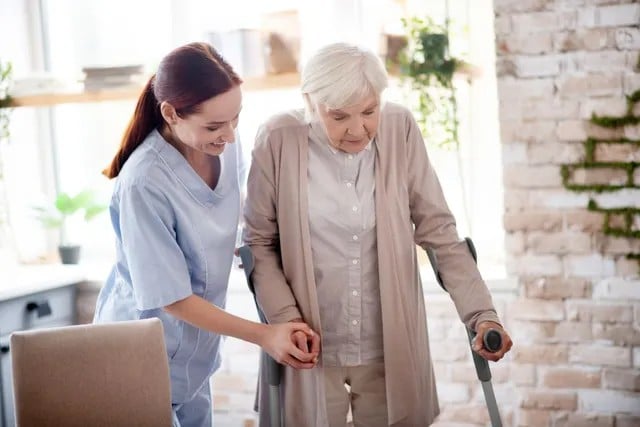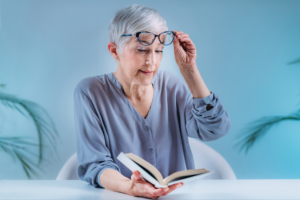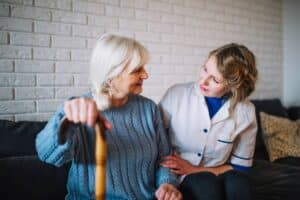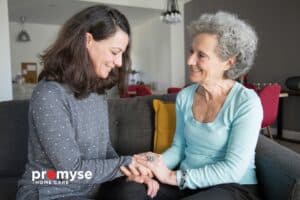Slip and fall accidents are the leading cause of injury for seniors in Canada, and the damaging repercussions of a fall on the quality of life can be significant. Every year 1 in 3 seniors across the country are injured in a slip and fall accident which can impact their ability to sustain an independent lifestyle.
Taking preventative measures to avoid injuries from falls is often the most effective way to reduce the risk factors and dangers associated with falls. Seniors in the Kitchener, Waterloo, and Cambridge areas may benefit from home care assistance to establish a safer and more comfortable environment within their homes.
Potential Impact of a Fall
Increased age directly coincides with a more vulnerable state of health. This means experiencing a fall over the age of 65 will likely have a more profound impact on health than it would on a middle-aged adult. Severe injuries can have lasting effects and compromise independence and the ability to carry out daily routines.
Physical and Mental Effects
A fall in the home may result in physical injuries like head trauma, fractures, broken bones, sprains, cuts, abrasions, and more. Recovering from a physical injury can be a long and strenuous road, and the older the individual injured, the longer and more demanding the healing process tends to be.
The problem with an injury sustained in a fall is that it often doesn’t end with a physical impact. A fall can be frightening and traumatic, with lingering mental and emotional repercussions. For instance, it may induce more significant anxiety and worry that another fall might occur, shattering self-confidence and feelings of security.
These feelings can discourage seniors from getting the exercise they need to maintain physical health. This can snowball, leading to a more sedentary and isolated lifestyle, which may end in severely impaired mobility or depression. That is why preventative measures to avoid fall injuries are crucial to avoid negatively impacting the physical and mental health of seniors in a significant way.
Keeping Seniors Safe
Establishing safe and healthy practices and safety measures around the home can help prevent seniors from sustaining slip and fall injuries. Knowing the risk factors to detect vulnerabilities is an excellent way to implement an effective prevention plan.
Some relevant risk factors to consider include the following:
- Medications
- Chronic health problems
- Visual impairments
- Hearing loss
- Sedentary lifestyle
- Poor nutrition
- Diminished strength, mobility, balance, coordination
- Trip hazards around the home
- Other environmental factors
These things may contribute to an increased risk of falling and being injured. Getting ahead of possible problems before they occur helps reduce the risk of injury and improve overall health and well-being.

Preventative Measures to Reduce Fall Risks
Talk to a Health Professional: Consult your doctor, healthcare, or home care professional to assess fall risk factors and detect any health-related vulnerabilities that may lead to a fall.
Schedule Routine Vision and Hearing Tests: Difficulties with vision and hearing are prevalent in seniors. Hearing and vision assessments should be done regularly after age 65, regardless, to prevent a variety of more severe health issues.
Medication Side-Effects: Dizziness and fatigue are common side-effects of medications and may contribute to fall risk. Be aware of the possible side effects of each medication and how multiple drugs might interact with one another to increase the risk of falling.
Symptoms of Existing Health Conditions: Knowing the symptoms of existing health conditions can offer insight into whether these conditions might cause vision, balance, movement, or hearing changes that increase fall risks.
Home Safety: Clear clutter, tuck away chords, rug corners, and other items one could trip on. Ensure rooms are well-lit so that the way is clear and organize furniture in a safe and easy-to-navigate arrangement. Installing handrails can also be helpful in some areas, such as the bathroom.
Keep Fit: Maintaining physical fitness and nutrition helps develop balance and keeps the body in better overall physical condition, making it more robust and less prone to tumbling.
Foot Traction: Slippery surfaces often lead to slips and falls. Installing rubberized mats or ensuring that socks and slippers have traction grips on the bottom can help reduce the chances of slipping. Comfortable shoes with good treads are helpful indoors and out.
While falls are a real risk for seniors, it is essential to remember that falls do not necessarily have to be an inevitable aspect of being older. Arrangements to minimize risks as much as possible is necessary. Remaining aware of potential dangers, risk factors, and vulnerabilities is critical.
Taking steps to attend to the environment and general health can help keep seniors feeling safer and more comfortable within their homes as they continue to live out their lives.



